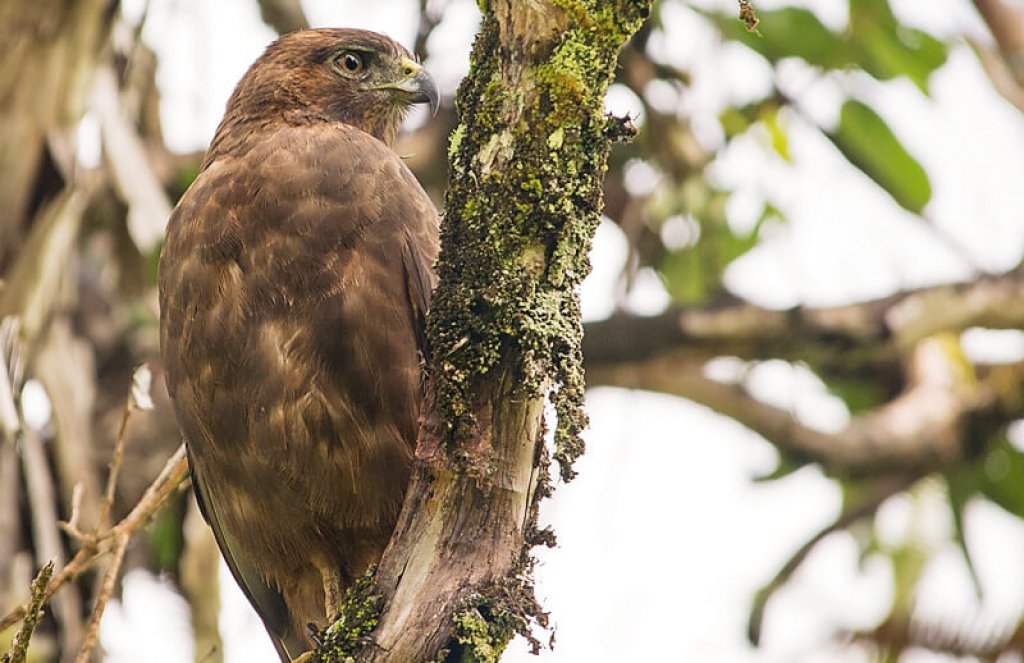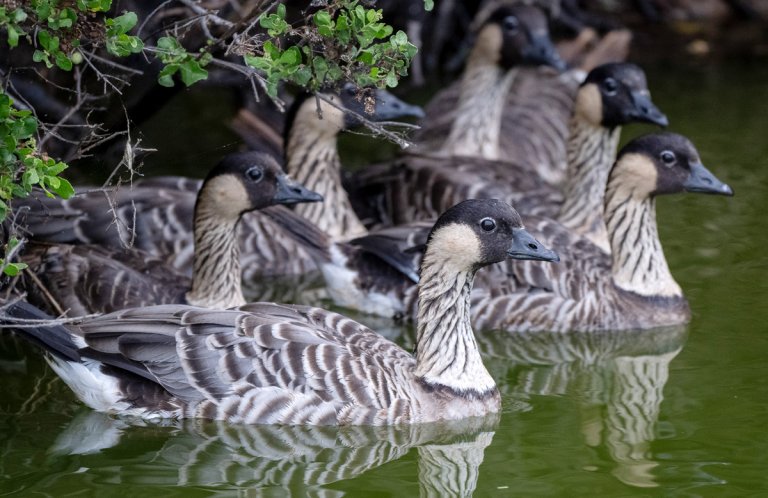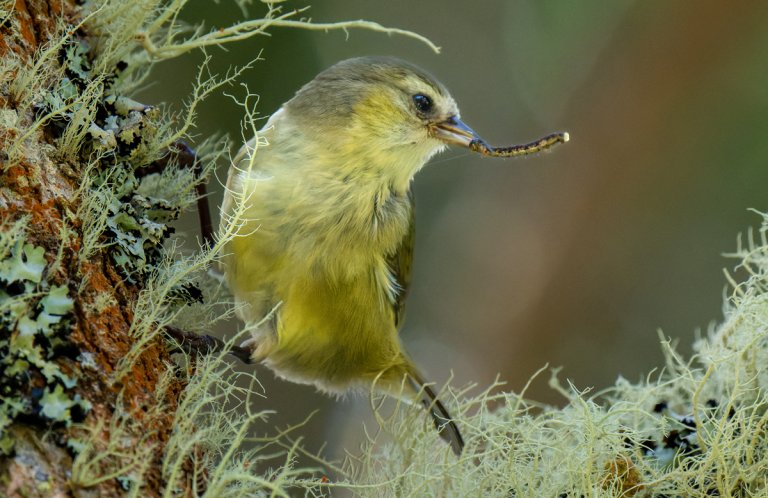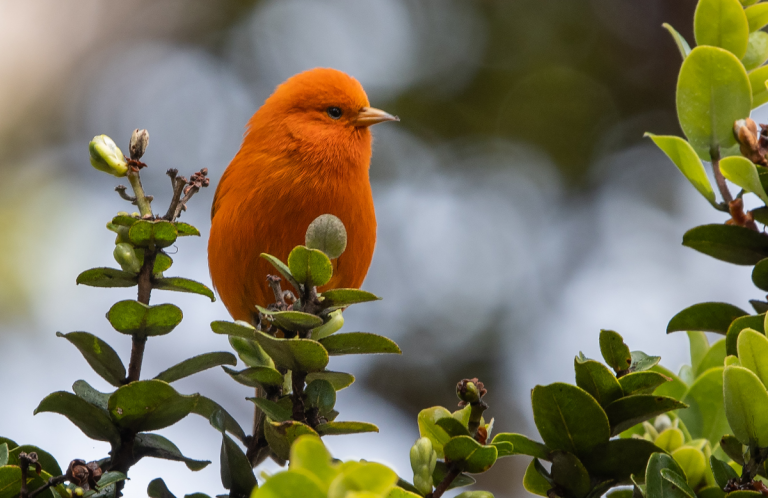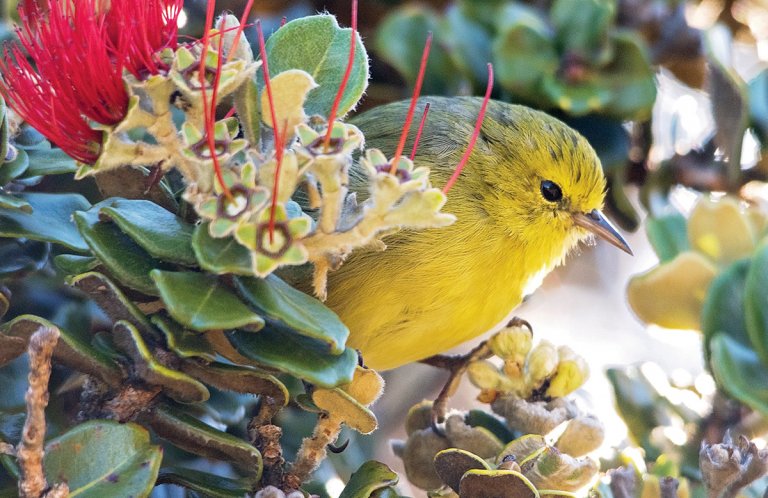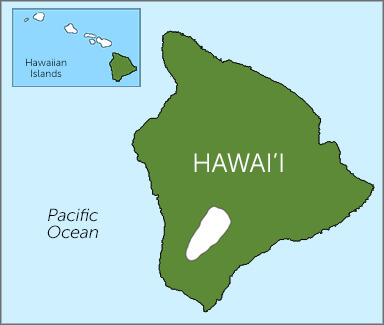 The Hawaiian Hawk, or 'Io, lives only in Hawai'i and was a symbol of royalty in Hawaiian culture. It was considered an "'aumakua"—a family or personal god—which made harming or killing this bird taboo. 'Io have shrill, high-pitched calls that echo their Hawaiian name.
The Hawaiian Hawk, or 'Io, lives only in Hawai'i and was a symbol of royalty in Hawaiian culture. It was considered an "'aumakua"—a family or personal god—which made harming or killing this bird taboo. 'Io have shrill, high-pitched calls that echo their Hawaiian name.
The 'Io's biggest threats are deforestation from agriculture, development, and logging, along with habitat degradation from introduced livestock and invasive plants. Additional hazards include illegal shooting, poisoning, and collisions.
Hawai'i's Only Hawk
The 'Io is the only native member of the hawk family remaining in the Hawaiian archipelago. Like many raptors, it occurs in both light and dark color phases. Although fossil records show that ‘Io once occurred on Moloka'i and Kaua'i, they now breed only on the Big Island, but are occasionally seen on Maui, O'ahu, and Kaua'i.
Sign up for ABC's eNews to learn how you can help protect birds
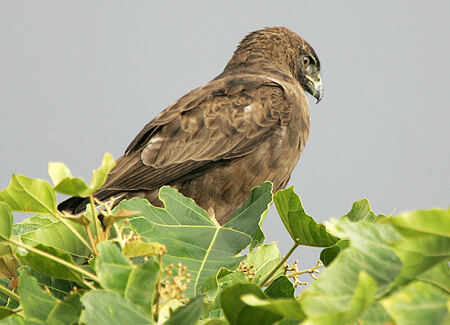
Hawaiian Hawk by Michael Walther
'Io are non-migratory and mostly solitary, remaining in and defending their territory year round. They feed in a variety of habitats including tree plantations, orchards, and forests.
Opportunistic predators, Hawaiian Hawks are versatile in their feeding habits, taking invasive rodents, insects, and birds (both native and introduced), by pouncing from a stationary perch or diving from the air.
Native Forests Needed
Degradation of native forest continues to have the greatest negative impact on this species. Although Hawaiian Hawks forage in non-native vegetation, they prefer to nest in native 'ōhi'a trees.
The U.S. Fish and Wildlife Service has proposed several times—most recently in 2014—taking the Hawaiian Hawk off the endangered species list. But many native Hawaiians and scientists disagree with this proposal, citing the 'Io's extremely limited range, continually shrinking habitat, and small population.
ABC is working to boost support for Hawaiian bird conservation through our Hawai'i Program, a multi-year conservation effort to increase awareness and gain needed funding for the continued survival of endemic birds such as the ‘Io.
Donate to support ABC's conservation mission!





































